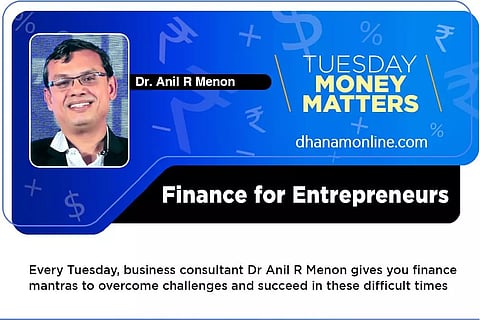

Read the article in Malayalam
Finance Acumen : Introduction To Financial Statements
As can be recalled from the earlier article, the fundamental purpose of any business is to make profits. It is the Consolidated Profit & Loss statement (P & L) which indicates profitability of the business. Cash Flow statement is equally important as it indicates Liquidity. Finally Balance Sheet indicates Solvency.
| Sr . No. | Statement | Indicates |
| 1 | Consolidated Profit & Loss | Profitability |
| 2 | Cash Flow | Liquidity |
| 3 | Balance Sheet | Solvency |
In this article we shall discuss the balance structure in detail.
Q1) What is the structure of the Balance Sheet & why is it so called?
Ans. Balance Sheet is a statement of Assets and Liabilities. The Balance Sheet can be simplified and understood in a logical manner if one remembers these 3 principles.
The statement is called Balance Sheet as finally the liabilities (sources) and Assets (application) will equalise and balance each other.
Q2) What are the various liabilities of a firm?
Ans. This is best understood by considering a simple example of a person buying a house. His two main sources of funds will be his own funds and borrowed loans. Similarly a Corporate will have two main sources : Equity which is essentially owners funds and Debt which is borrowed funds. The two main liabilities of a firm are Equity and Debt.
Q3) What are the various assets of a firm?
Ans. Assets as explained above are the applications of funds by the firm. The various assets possessed by the firm are listed below in a logical manner. They are Fixed Assets, Current Assets, Intangible Assets and Investments.
Q4 ) What are fixed assets ?
Ans. The firm would first buy land, erect a building, install plant & machinery (for running the production process) and also purchase furniture & fixtures to support the operations. Thus at the outset the firm would invest in Long term Fixed assets part of its capital expenditure.The various fixed assetsof a firm as explained above therefore are Land, Building, Plant & Machinery and Furniture & Fixtures.
Q5) What are current assets?
Ans. Current assets are assets in which the firm applies money for a short period of time. The firm would need these assets for its daily operations. Let us look at a typical working capital cycle. The firm would invest funds in raw materials, convert into Work in Progress (WIP) which is finally processed into Finished Goods Inventory. These Finished goods would then be sold. Though the firm would prefer to sell these goods on cash, a part of them may be sold on credit basis due to business compulsions. Thus the firm would have receivables from where money is due. Finally the form would use these funds to procure raw material and the cycle would continue.
WORKING CAPITAL CYCLE
It is pertinent to note here that the firm may purchase some raw materials on credit. Thus it may have some payables on its books. These payables are essentially liabilities as they are sources of funds to the firm. Thus the various current assets are raw materials, work in progress, finished goods inventory, cash & cash equivalents and receivables. On the other hand payables/ creditors are current liabilities.
Q6) What are investments assets?
Ans. Just like a person purchases shares and may have deposits in banks, a firm too may invest its funds. These investments may be in shares of group companies, investments in other financial instruments etc. These investments may be for the long term or short term depending on the firm’s investment strategy.
Q7) What are intangible assets ?
Ans. Intangible assets have no physical shape or size. Intangible assets possessed by a form can be patents, goodwill, brand, intellectual property rights (IPRs) etc. In the current globalised scenario intangible assets are as important as tangible assets(fixed assets, working capital assets & investments).
Dr. Anil R. Menon can be contacted at anilrmenon1@gmail.com.
Read the article in Malayalam
Read DhanamOnline in English
Subscribe to Dhanam Magazine
